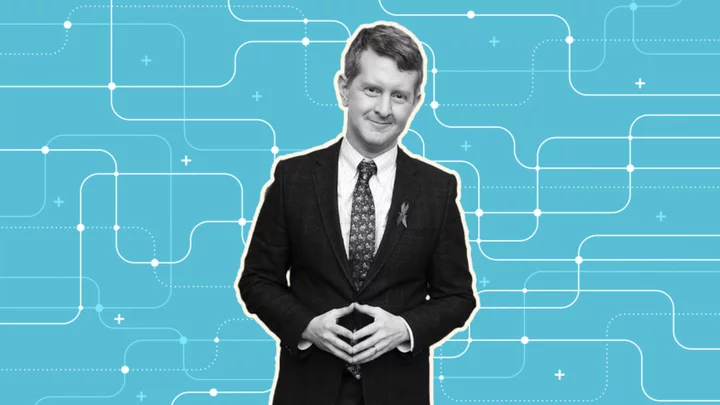Born in the Republic of Venice in 1254, Marco Polo was a trader, traveler, and adventurer who (probably) journeyed to Central Asia and China in an era when vast swaths of the world were unknown to Europeans. When he returned from his adventures, he brought back stories that introduced the customs and cultures of Asia to his countrymen.
In his influential work, The Travels of Marco Polo, the explorer outlined the geography of Asia, described the traditions of the people, and told tales of life at the court of Mongol emperor Kublai Khan. But as amazing as all that may sound, it only scratches the surface of the bizarre and exciting life of the traveling merchant. Here are 15 things you might not know about Marco Polo.
1. Marco Polo began his adventures as a teenager.
Marco Polo wasn’t yet a seasoned traveling merchant when he embarked on his great journey east. In fact, he was just 17 years old. In 1271, Polo left home with his father Niccolo and his uncle Maffeo and set out for Asia, hoping to reach the court of Kublai Khan. It was likely the first time the young Polo had left home as well as the first time he’d met his father and uncle, who had been traveling the world since Marco’s birth.
2. He wasn’t the first European merchant to explore China.
While The Travels of Marco Polo brought knowledge of the Far East to Europe, Marco Polo wasn’t actually the first European to visit China. In fact, he wasn’t even the first Polo to visit China. Before Marco embarked on his journey to Asia, Niccolo and Maffeo Polo had already traveled to China and met with Kublai Khan.
In some ways, Marco’s journey was a bit of a sequel to Niccolo and Maffeo’s original adventures: The two older travelers had befriended the great Mongol emperor and told him about Christianity, the pope, and the church in Rome. Curious about Western religion, Kublai Khan apparently requested that the travelers bring him 100 Christian men from whom to learn more about the religion, as well as some holy oil of the lamp in Jerusalem. Niccolo and Maffeo returned to Europe where they picked up the young Marco Polo and somehow procured the oil, but not the 100 Christians, before journeying east again.
3. Marco Polo traveled 15,000 miles over the course of 24 years.
After he left home at 17, Marco Polo didn’t return to Venice for 24 years. Over the course of two decades, he traveled roughly 15,000 miles on land along the Silk Road and by sea, traversing parts of Asia. If some highly controversial (and possibly forged) maps are to be believed, Polo also visited parts of the Alaskan coast hundreds of years before the Russian expedition led by the Danish explorer Vitus Bering.
4. He dictated his life story to a romance writer during a stint in jail.
When Marco Polo returned to Europe in 1295, his adventures were far from over. He found Venice at war against the Republic of Genoa, and took up arms on behalf of his homeland. After a skirmish at sea, Polo was captured by the Genoese forces and tossed in jail. There, he befriended another prisoner, Rustichello of Pisa, who just happened to be a writer of popular romances. He began dictating his story to Rustichello, who produced the manuscript that would become The Travels of Marco Polo.
5. Marco Polo introduced the concept of paper currency to Europe.
The Mongol Empire was circulating paper money long before European nations began printing their own bills. Polo described the strange currency in his book, facetiously describing Kublai Khan as an alchemist who could transform mulberry trees into money instead of base metals into gold. He was fascinated by the way paper money was treated by the emperor’s subjects as though it were as valuable as gold or silver—and described the systems in place to prevent counterfeiting.
6. He was impressed by yak hair.
Marco Polo encountered numerous animals on his journey that were then unknown in Europe, such as the chow chow dog breed, the musk deer, and the yak. Of these, the yak seemed to be Polo’s favorite: Amazed by the silky softness of their fur, he brought yak hair to Venice with him, where he displayed it as a curiosity.
7. Polo described new and unusual foods—but pasta wasn’t one of them.
Many believe, erroneously, that Marco Polo introduced pasta to Italy. Noodles were already big in Europe by that time, but Polo did encounter some interesting foods while in Asia. During his travels, he found endless quantities of rare spices costing virtually nothing, such as ginger, which had been widely used in the Roman era but had become rare in the intervening centuries. And while he may not have brought ice cream to Europe either, as some sources suggest, Polo does describe an early milkshake. The Mongols reportedly dried milk and then filled their flasks with the powder to take on their travels on horseback. While riding, they added water to the milk, and the motion caused the concoction to thicken into a syrup.
8. He thought rhinoceroses were unicorns.
In the 13th century, European folklore described unicorns as horned, horse-like animals who could tamed and captured only with the help of a young maiden. Marco Polo’s account of the animal debunked that superstition: unicorns weren’t serene and beautiful creatures who gravitated to the pure of heart. They were ugly and dangerous, with hair like a buffalo, feet like an elephant, the head of a wild boar, and a black horn in the middle of their foreheads. Unicorns, Polo informed his readers, liked to roll around in the mud and dirt, and attack people with their prickly tongues. Modern historians claim he was actually describing rhinoceroses.
9. Marco Polo believed in sorcery and evil spirits.
Throughout his book, Polo describes encounters with magicians and sorcerers. At the court of Kublai Khan, Polo met astrologers who (allegedly) could control the weather from the palace rooftops, and magicians who made flagons of wine levitate at feasts.
If Marco Polo sounds a little bit superstitious, it’s likely because he lived in superstitious times. Throughout his book, he not only recounts first-hand experiences with magic, but repeats the myths and rumors he encounters as fact. Polo claims it’s well known that evil spirits haunt the Gobi Desert, torturing travelers with illusions, and calling their names to turn them away from their path and make them lose their way—which is probably a reference to the very real phenomenon of the Gobi’s “singing” sands.
10. Polo claimed he was close friends with Kublai Khan.
In his book, Polo said he not only made it to the court of Kublai Khan in Shangdu—traveling farther than almost any European had in the process—but also befriended the emperor, becoming his right hand man and advisor.
11. He was granted a golden tablet of safe conduct.
When Marco Polo finally decided it was time to end his adventures and return home, Kublai Khan had grown so attached to the Venetian merchant that he denied his request. Polo finally convinced Kublai Khan to let him go in return for helping the emperor’s great nephew on a sea voyage. In order to ensure Polo was safe on his travels, the emperor awarded him a golden tablet of safe conduct—an inscribed gold plaque—which would help him obtain supplies on their journey and let everyone know he was under the emperor’s protection.
12. Marco Polo might have exaggerated his adventures a bit.
While Marco Polo and his ghostwriter Rustichello of Pisa were undoubtedly great storytellers, historians continue to debate exactly how true some of their stories were. Some historians have gone as far as to question whether Polo even made it to China, arguing he may have simply picked up stories from other merchants during his travels. While Polo’s historical significance isn’t up for debate, it’s unclear which of his tales stretched the truth.
13. A subspecies of wild sheep is named after him.
After providing some of the first written descriptions of yaks, musk deer, and of course, unicorns, it seems fitting that Polo would eventually have an ungulate named after him. In 1841, zoologist Edward Blyth named a subspecies of Central Asian wild sheep Ovis ammon polii after Marco Polo (the sheep are colloquially called Marco Polo sheep).
14. He inspired Christopher Columbus.
Marco Polo’s travels have inspired plenty of explorers to go on adventures of their own. Christopher Columbus brought a copy of Marco Polo’s book with him on his trips across the Atlantic Ocean. In the 1960s, a group of travelers even decided to follow Marco Polo’s exact route, journeying from Italy to China in cars and trailers instead of on horseback.
A version of this story was published in 2016; it has been updated for 2023.
This article was originally published on www.mentalfloss.com as 14 Surprising Facts About Marco Polo.









